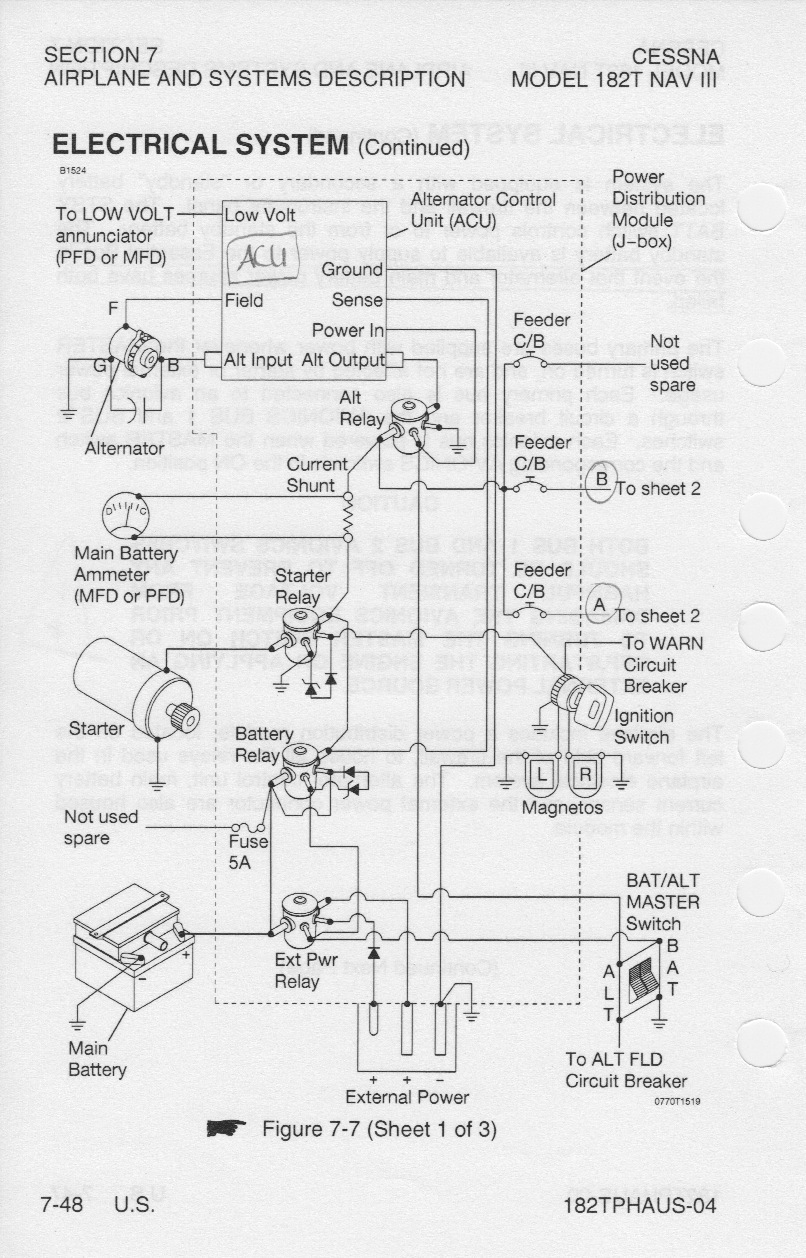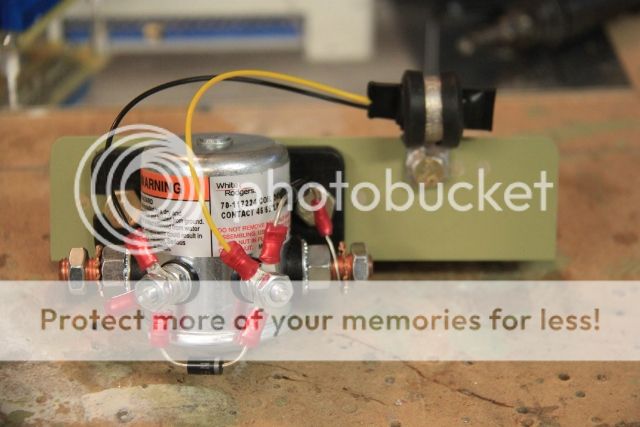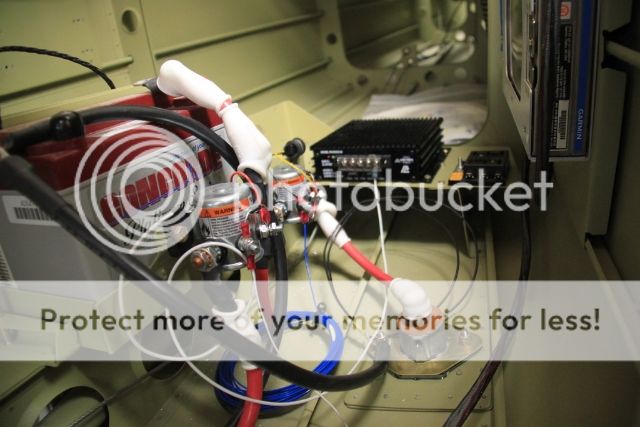I installed a Piper type ground power plug on the plane. I followed the wiring sample noted in Marc Ausman's Aircraft Wiring Guide. The ground power example is on page 51 if you have the guide. Here is the problem Im having:
I wired it exactly as in the example. With the battery installed, the ground power contractor is being activated and there is power from the battery to the ground power plug (no ground power applied). I thought maybe the diode was backwards, but when I swap it the other way, the fuse blows. The terminal (for the master switch wire) on the master contactor has power flowing to it. There is a wire that runs from that terminal to a terminal on the ground power contractor. I called the Stein guys and was told the master contactor small terminal will show a current on a tester, but it becomes grounded when the master switch is activated.
They way I belive the syestem in suppose to work is the power from the ground power plug activates the ground power contactor, which allows the current to flow to the battery and starter. When no ground power is applied, no power should be flowing back through the ground power contactor to the plug.
Hope all this make sense. Any ideas what I have wrong. THANK YOU>
I wired it exactly as in the example. With the battery installed, the ground power contractor is being activated and there is power from the battery to the ground power plug (no ground power applied). I thought maybe the diode was backwards, but when I swap it the other way, the fuse blows. The terminal (for the master switch wire) on the master contactor has power flowing to it. There is a wire that runs from that terminal to a terminal on the ground power contractor. I called the Stein guys and was told the master contactor small terminal will show a current on a tester, but it becomes grounded when the master switch is activated.
They way I belive the syestem in suppose to work is the power from the ground power plug activates the ground power contactor, which allows the current to flow to the battery and starter. When no ground power is applied, no power should be flowing back through the ground power contactor to the plug.
Hope all this make sense. Any ideas what I have wrong. THANK YOU>








